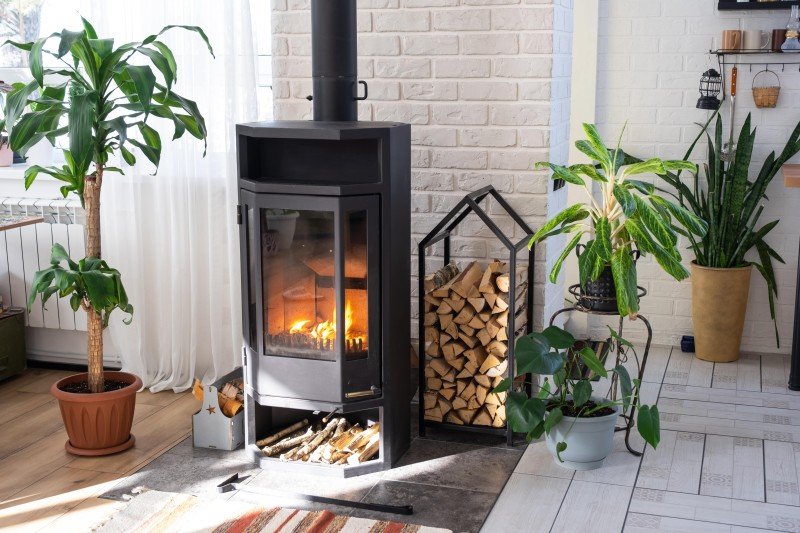The Under-Appreciated Benefits Of Fireplace
The Fireplace: A Warm Embrace of Tradition and Comfort
Fireplaces have actually been an important part of human habitation for centuries, serving as a source of warmth, a gathering place, and a symbol of convenience. While the modern variations might vary incredibly from their ancient ancestors, the attraction of a fireplace endures. This article explores the different aspects of fireplaces, including their history, function, types, and maintenance, while likewise attending to often asked questions.
The Evolution of Fireplaces
Fireplaces go back to ancient times when open flames were used for cooking, heating, and protection from wildlife. Over the centuries, fireplaces evolved from easy fire pits to the advanced renditions we see today. Here is a quick timeline of their development:
- Prehistoric Era: Cavemen utilized open flames for heat and cooking. Wind and smoke typically blew into homes.
- Middle Ages: Stone and brick fireplaces became common in homes and castles, incorporating chimneys to carry smoke outside.
- Renaissance: Elaborately designed mantels emerged, and fireplaces became centers of social interaction.
- Industrial Revolution: Innovations in heating products resulted in a range of styles and performances.
- Modern Era: The arrival of gas, electric, and bioethanol fireplaces provided cleaner alternatives to traditional wood-burning systems.
Table 1: The Evolution of Fireplaces
Age
Qualities
Ancient Era
Open flames for heat and cooking
Middle Ages
Stone and brick structures with early chimneys
Renaissance
Ornate mantels, social centers
Industrial Revolution
Diverse styles, development of new products
Modern Era
Gas, electric, and bioethanol options
The Purpose of a Fireplace
Fireplaces serve dual purposes: they supply physical heat and produce an emotional environment. House owners frequently collect around the fireplace to bond, share stories, and delight in a cozy setting. The glow of a fire can be relaxing, adding to a sense of relaxation and intimacy. Beyond individual satisfaction, fireplaces likewise provide functional advantages, consisting of:
- Home Heating: Effective heat source, particularly in colder environments.
- Increased Home Value: A properly designed fireplace can enhance the visual worth of a home.
- Emergency Heating: In case of power outages, wood-burning fireplaces can serve as a vital heat source.
- Aesthetic Appeal: A focal point that adds to interior decor.
Types of Fireplaces
Today, fireplaces can be found in various styles and fuel types, accommodating a diverse variety of choices and settings. Here are some typical types:
Wood-Burning Fireplaces:
- Traditional fire pits
- Timeless masonry fireplaces
- Need significant upkeep and chimney upkeep
Gas Fireplaces:
- Available in both direct vent and ventless varieties
- Simpler to use and keep than wood-burning fireplaces
- Supply immediate heat with a flick of a switch
Electric Fireplaces:
- Offer associated heat sources without real flames
- Typically designed to imitate traditional fireplaces
- Suitable for smaller sized spaces and homes without a chimney
Bioethanol Fireplaces:
- Use bioethanol fuel, offering a sustainable option
- Need no ventilation and can be positioned anywhere
- Safe and easy to preserve
Table 2: Types of Fireplaces
Type
Fuel Source
Functions
Upkeep Requirements
Wood-Burning
Wood
High ambiance, heat source
Regular chimney cleaning
Gas
Gas or gas
Immediate heat
Minimal, occasional maintenance
Electric
Electrical energy
Easy setup
Really low upkeep
Bioethanol
Bioethanol fuel
Ventless, portable
Low, primarily cleaning
Maintenance and Safety Considerations
Owning a fireplace includes certain duties, especially regarding its safe operation and long-lasting maintenance. Here are very important upkeep ideas and security standards:
Maintenance Tips:
- Annual Inspection: Always have your chimney and fireplace examined a minimum of once a year by a qualified professional.
- Routine Cleaning: Clean out ashes and debris after each use, and make sure the flue is open before starting a fire.
- Check for Cracks: Inspect masonry for fractures or damage to avoid structural issues.
- Use Proper Fuel: Only use dry, skilled wood for wood-burning fireplaces; do not burn treated wood.
Safety Guidelines:
- Install Smoke Detectors: Ensure smoke alarm are functional, checking them monthly and replacing batteries as needed.
- Keep a Fire Extinguisher: Have one nearby, even if a fireplace is used occasionally.
- Supervise Flames: Never leave a fire ignored, and ensure kids and pets are kept track of around the fireplace.
Frequently Asked Questions (FAQs)
1. How can I minimize smoke from a wood-burning fireplace?
To decrease smoke, use dry, experienced wood, and guarantee that your chimney is tidy and unobstructed.
2. Is it safe to use gas fireplaces during a gas leakage?
Never utilize a gas fireplace during a gas leak. Right away leave the location and contact gas services for aid.
3. Can I install an electric fireplace myself?
Electric fireplaces are typically easy to install, but it is advised to talk to experts to ensure security and compliance with regional building regulations.
4. What is Fireplaces Near Me of fireplace for small spaces?
Electric fireplaces or bioethanol models are typically best for small areas, as they do not require comprehensive ventilation or structural modifications.
Fireplaces have actually transcended their initial purpose of supplying heat to end up being cherished aspects of home style and household life. They evoke memories of heat, events, and togetherness while providing practical advantages that enhance modern living. By comprehending the various kinds of fireplaces, their upkeep, and security practices, homeowners can delight in the classic appeal of this beloved function for generations to come.
